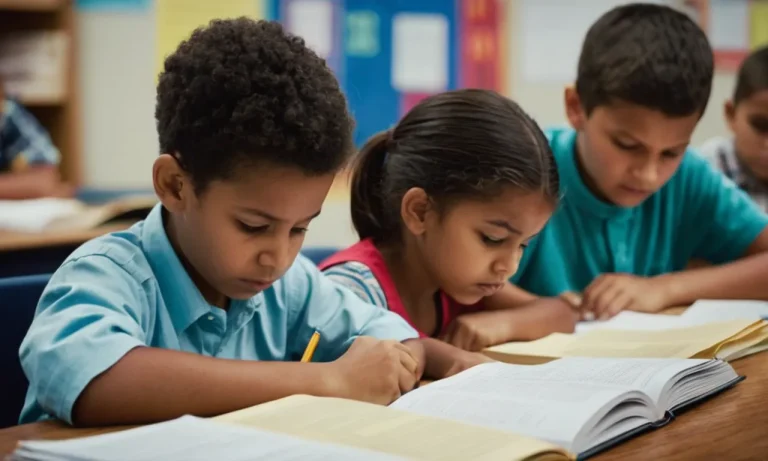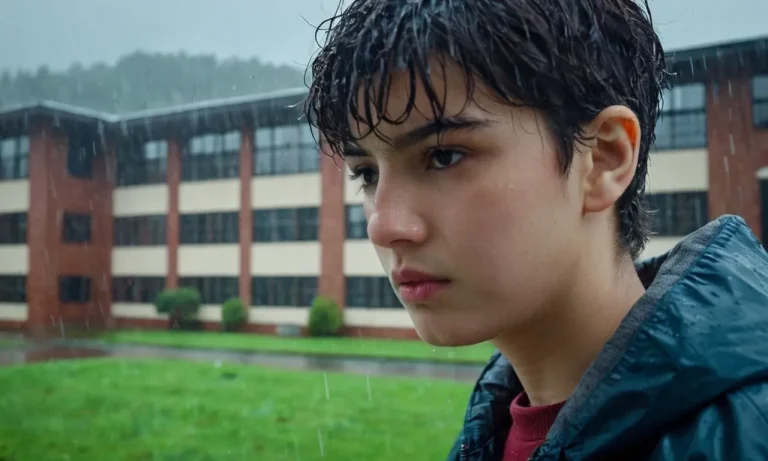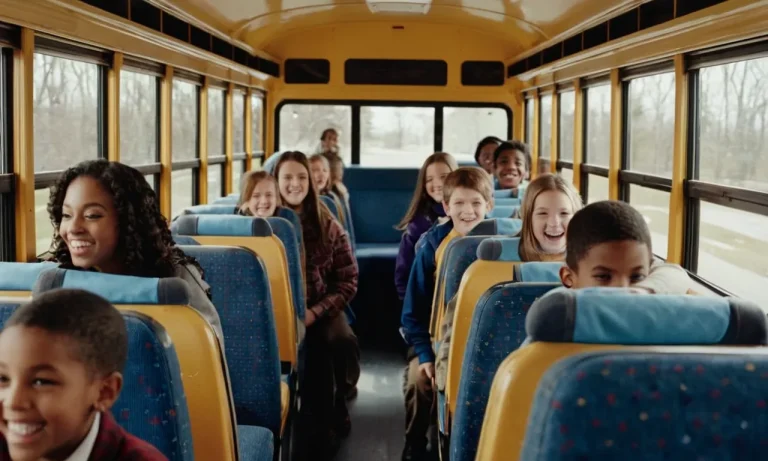In the ever-evolving landscape of education, the term ‘brick and mortar school’ has become a familiar phrase, yet its true essence often remains elusive. As the digital age continues to reshape the way we learn and teach, understanding the significance of this traditional educational model is crucial.
If you’re short on time, here’s a quick answer to your question: A brick and mortar school refers to a physical, traditional educational institution where students attend classes in person, as opposed to online or virtual learning environments.
In this comprehensive guide, we will delve into the intricacies of brick and mortar schools, exploring their history, characteristics, advantages, and challenges. We will also examine how they differ from alternative educational models and discuss their role in shaping the future of learning.
The Origins and Evolution of Brick and Mortar Schools
The Rise of Traditional Educational Institutions
The concept of brick and mortar schools, also known as traditional educational institutions, has its roots in ancient civilizations. From the ancient Greek academies to the medieval universities in Europe, the need for physical spaces dedicated to learning has been a constant throughout history.
These physical spaces served as centers of knowledge, where scholars and students gathered to exchange ideas, engage in intellectual discourse, and pursue their academic pursuits.
As societies evolved and populations grew, the demand for structured education systems increased. Brick and mortar schools emerged as a means to provide a structured learning environment, where students could receive instruction from qualified teachers in a dedicated setting.
These physical spaces were designed to facilitate learning, with classrooms, libraries, laboratories, and other facilities tailored to meet the educational needs of students.
Adapting to Societal Changes and Technological Advancements
Over time, brick and mortar schools have undergone significant transformations to adapt to societal changes and technological advancements. As educational philosophies and methodologies evolved, the physical spaces of traditional schools were modified to accommodate new teaching approaches and learning styles.
For example, the rise of interactive and collaborative learning led to the incorporation of flexible learning spaces, group study areas, and technology-enabled classrooms.
The integration of technology into education has been a major driving force behind the evolution of brick and mortar schools. According to a report by the National Center for Education Statistics, in 2018, 95% of public school districts in the United States had access to high-speed internet, and 88% of public school teachers had access to computers in their classrooms. This technological revolution has transformed traditional classrooms into dynamic learning environments, where students can leverage digital resources, engage in virtual simulations, and collaborate with peers and experts from around the world.
The Enduring Relevance of Physical Learning Spaces
Despite the advent of online education and virtual learning platforms, brick and mortar schools continue to hold significant relevance in today’s educational landscape. While online education offers flexibility and accessibility, physical learning spaces provide a unique and invaluable experience that cannot be replicated entirely in a virtual environment.
😊
Brick and mortar schools foster a sense of community and social interaction, allowing students to develop interpersonal skills, collaborate with peers, and build meaningful relationships with educators.
These physical spaces also offer access to specialized facilities, such as laboratories, art studios, and sports facilities, which enhance the overall learning experience. Furthermore, research suggests that face-to-face instruction and the structured environment of traditional schools can positively impact student engagement, motivation, and academic achievement.
As we look to the future, brick and mortar schools will continue to evolve, embracing new technologies and pedagogical approaches while preserving the essence of physical learning spaces. The enduring relevance of these institutions lies in their ability to adapt and provide a well-rounded educational experience that fosters intellectual growth, social development, and personal growth for generations to come.
👏
Key Characteristics of Brick and Mortar Schools
Brick and mortar schools, also known as traditional schools or physical schools, offer a unique educational experience that sets them apart from online or virtual learning environments. These schools are characterized by several key features that have been integral to the educational system for centuries.
Let’s delve into the essential characteristics of brick and mortar schools:
Physical Classrooms and Facilities
One of the defining characteristics of brick and mortar schools is the presence of physical classrooms and facilities. Students attend classes in dedicated spaces designed for learning, complete with desks, whiteboards, and other educational resources.
These schools often have specialized facilities such as science labs, art studios, libraries, and gymnasiums, providing students with hands-on learning experiences and opportunities for extracurricular activities.
According to a report by the National Center for Education Statistics, in 2013-2014, there were approximately 98,000 public elementary and secondary schools in the United States, with an average enrollment of 473 students per school.
Face-to-Face Instruction and Interaction
Brick and mortar schools foster face-to-face instruction and interaction between teachers and students. This direct communication allows for real-time feedback, personalized attention, and the development of interpersonal skills.
Teachers can observe students’ body language and facial expressions, adapting their teaching methods accordingly. Additionally, students have the opportunity to collaborate and engage with their peers, fostering social skills and teamwork.
A study by EdWeek found that students in face-to-face classrooms outperformed their online counterparts in both reading and math, highlighting the benefits of in-person instruction.
Structured Schedules and Routines
Brick and mortar schools typically operate on structured schedules and routines. Students follow a set timetable, attending classes at specific times and adhering to established rules and procedures. This structured environment helps instill discipline, time management skills, and a sense of responsibility in students.
Additionally, the daily routine of attending school, interacting with peers, and participating in extracurricular activities can foster a sense of community and belonging. A study published in the Journal of Educational Psychology found that students who followed consistent routines had better academic performance and emotional well-being compared to those with irregular schedules.
Extracurricular Activities and Social Experiences
Brick and mortar schools offer a wide range of extracurricular activities and social experiences that contribute to a well-rounded education. Students can participate in sports teams, clubs, music or drama groups, and various school events.
These activities not only provide opportunities for personal growth and skill development but also foster social connections and a sense of belonging. According to the National Center for Education Statistics, in 2017, approximately 57% of public high school students participated in at least one extracurricular activity, with sports being the most popular (39%).
These experiences can have a positive impact on students’ mental health, self-esteem, and overall well-being.
Advantages of Brick and Mortar Schools
Fostering Interpersonal Skills and Social Development
Brick and mortar schools provide a unique environment for students to develop essential interpersonal and social skills. By interacting with peers and teachers on a daily basis, students learn valuable lessons in communication, collaboration, and conflict resolution.
This face-to-face interaction fosters empathy, emotional intelligence, and the ability to navigate social situations, which are crucial for success in both personal and professional realms. According to a study by the Edweek, students who receive social-emotional learning instruction have better academic performance, improved attitudes, and increased prosocial behaviors.
Hands-on Learning and Practical Experiences
Traditional brick and mortar schools offer a wealth of opportunities for hands-on learning and practical experiences. From science labs and art studios to workshops and field trips, students can engage in experiential learning that reinforces theoretical concepts and fosters a deeper understanding of the subject matter.
These practical experiences not only enhance learning but also provide valuable opportunities for students to explore their interests, develop practical skills, and gain real-world exposure. A study by the American Psychological Association highlights the importance of active learning strategies, which have been shown to improve student engagement, retention, and overall academic performance.
Access to Specialized Resources and Facilities
Brick and mortar schools often have access to specialized resources and facilities that may not be readily available in other educational settings. From well-equipped libraries and computer labs to sports facilities and specialized classrooms, these resources provide students with a comprehensive learning experience.
Additionally, on-site support services, such as counseling, tutoring, and extracurricular activities, contribute to a well-rounded educational experience. According to a report by the National Center for Education Statistics, 92% of public schools in the United States have a library media center, and 77% have at least one computer lab.
Structured Learning Environment and Discipline
Brick and mortar schools offer a structured learning environment that promotes discipline and routine. This structured setting can be beneficial for many students, as it helps them develop time management skills, organizational habits, and a sense of responsibility.
Additionally, the presence of teachers and administrators on campus creates an atmosphere of accountability and support, which can motivate students to stay focused and engaged in their studies. A study by the Edweek found that effective school discipline policies can have a positive impact on student achievement and overall school climate.
Challenges and Considerations for Brick and Mortar Schools
While brick and mortar schools have been the traditional model of education for centuries, they face several challenges in the modern era. Adapting to technological advancements, addressing diverse learning needs, ensuring safety and security, and managing operational costs are some of the key considerations for these physical institutions.
Adapting to Technological Advancements and Online Learning
The rapid pace of technological progress has transformed the educational landscape, with online learning platforms and digital resources becoming increasingly prevalent. Brick and mortar schools must embrace this change and integrate technology into their curriculum and teaching methods.
This may involve investing in digital infrastructure, providing professional development for teachers to enhance their technological skills, and adopting blended learning approaches that combine traditional classroom instruction with online components.
According to a report by the National Center for Education Statistics, in 2019, 92% of children aged 3 to 18 had access to the internet at home. This highlights the importance of incorporating digital tools and resources into the educational experience.
Addressing Diverse Learning Needs and Styles
Students have varying learning styles, abilities, and educational needs. Brick and mortar schools must cater to this diversity by offering personalized learning experiences and accommodating different learning preferences.
This may involve implementing differentiated instruction strategies, providing additional support for students with special needs, and offering enrichment opportunities for advanced learners. By embracing inclusivity and recognizing the unique strengths and challenges of each student, brick and mortar schools can create an environment that fosters academic growth and personal development for all.
Ensuring Safety and Security in Physical Spaces
The physical nature of brick and mortar schools necessitates a strong emphasis on safety and security measures. Schools must have robust emergency preparedness plans in place to address potential threats such as natural disasters, fires, or acts of violence.
This may involve conducting regular drills, implementing access control systems, and collaborating with local law enforcement agencies. Additionally, creating a positive school climate and fostering a sense of community can contribute to a safer and more secure learning environment.
According to the Education Week, school safety incidents are often underreported, highlighting the need for proactive measures and open communication channels.
Maintaining Facilities and Managing Operational Costs
Brick and mortar schools require significant financial resources to maintain their physical facilities and cover operational costs. This can include expenses related to utilities, maintenance, repairs, custodial services, and staff salaries.
Schools must carefully manage their budgets and explore cost-effective strategies while ensuring a conducive learning environment. This may involve implementing energy-efficient practices, exploring alternative funding sources, or forming partnerships with community organizations or businesses.
According to a report by the EdBuild, there are significant funding disparities among school districts, with some struggling to provide adequate resources for their students.
By addressing these challenges proactively and embracing innovation, brick and mortar schools can continue to play a vital role in shaping the minds of future generations, fostering personal growth, and preparing students for success in an ever-evolving world.
Conclusion
Brick and mortar schools have been the cornerstone of traditional education for centuries, providing a structured and immersive learning environment for students. While the digital age has introduced new educational models, the enduring value of physical learning spaces cannot be overlooked.
As we navigate the ever-changing educational landscape, it is essential to strike a balance between embracing technological advancements and preserving the unique benefits of brick and mortar schools.
By understanding the strengths and challenges of this traditional model, educators, policymakers, and communities can make informed decisions to ensure that students receive a well-rounded and enriching educational experience.
Ultimately, the brick and mortar school remains a vital component of the educational ecosystem, offering a multifaceted approach to learning that fosters not only academic growth but also personal development, social skills, and a sense of community.
As we look to the future, these institutions will continue to evolve, adapting to new challenges while upholding the timeless principles of quality education.






